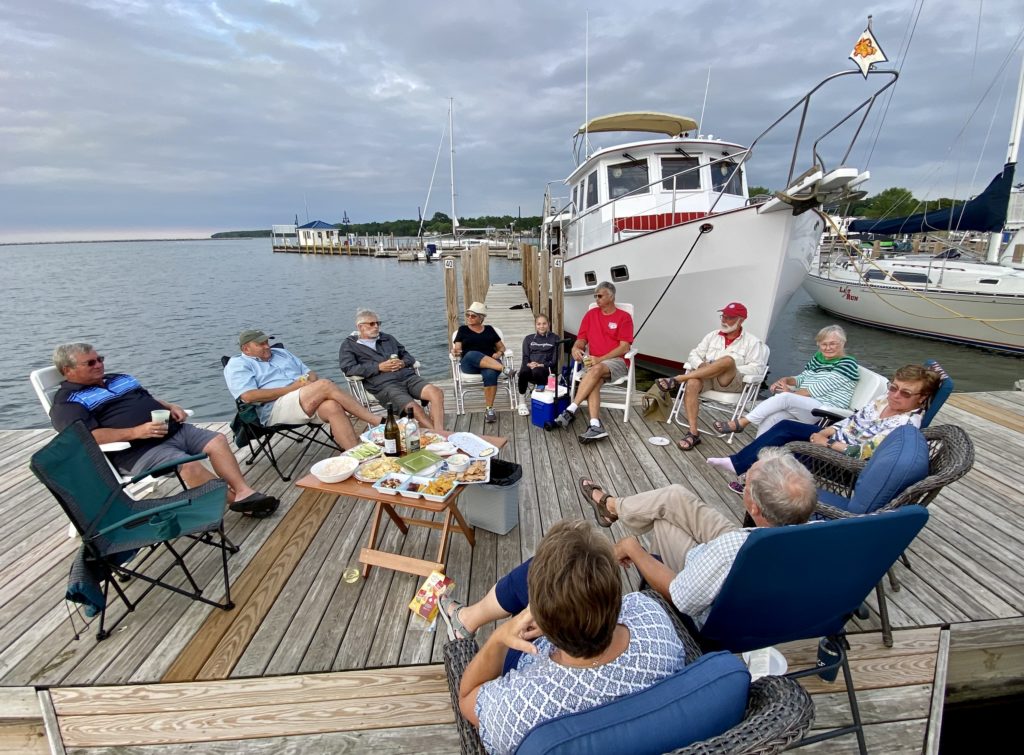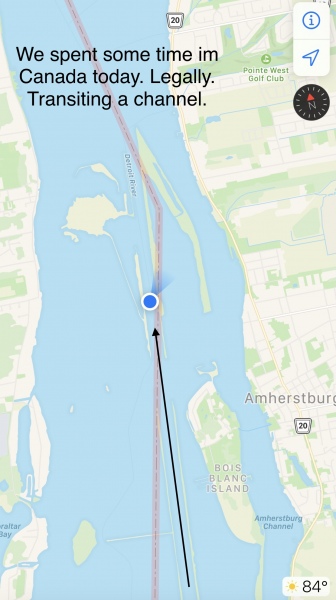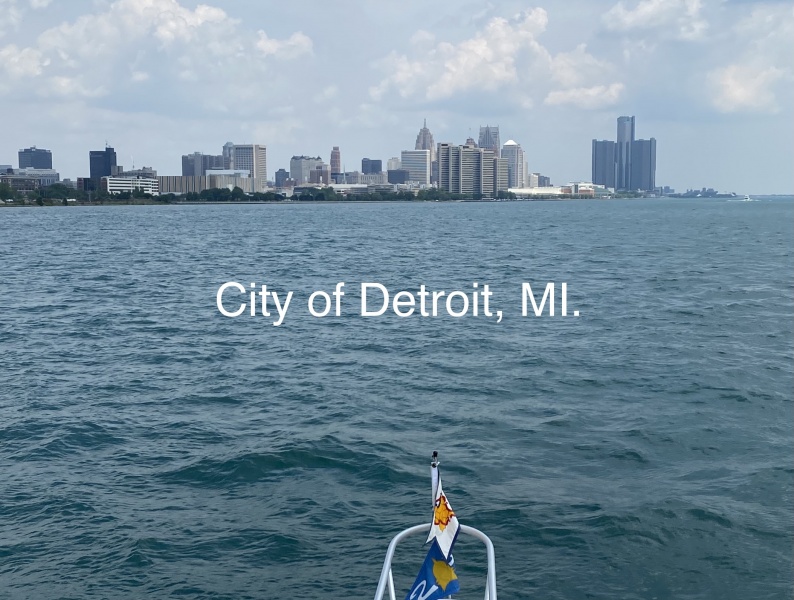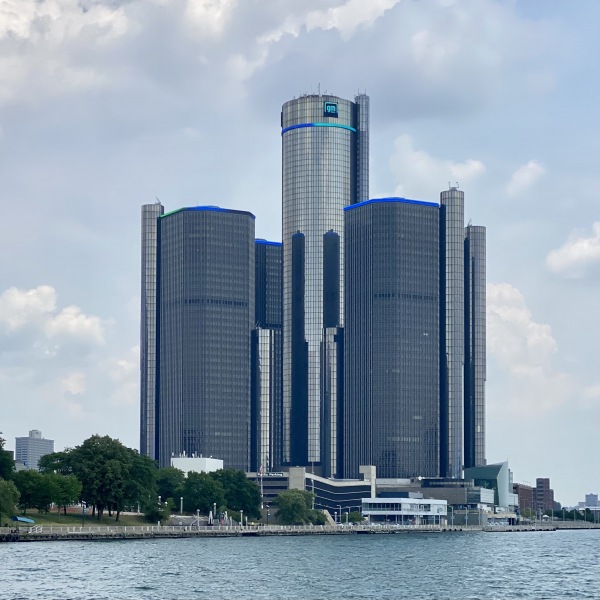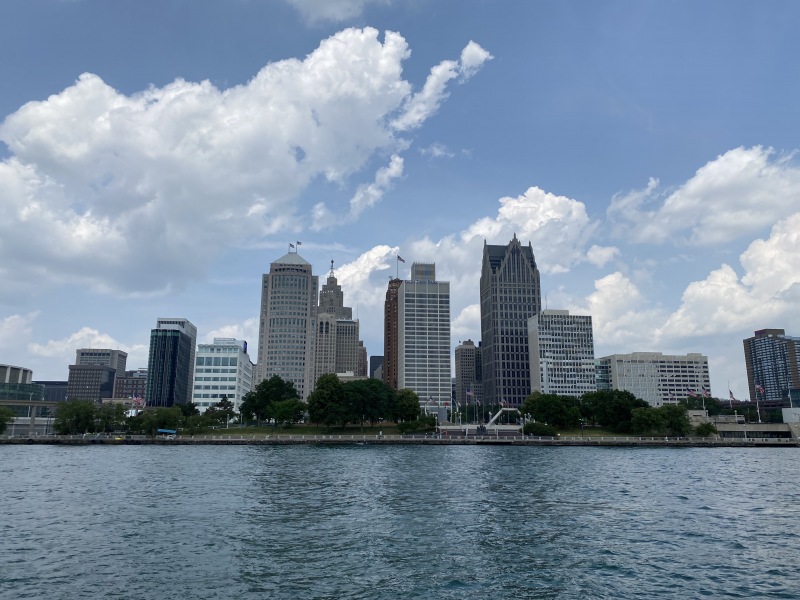We left Put-In-Bay at dawn on July 7. Our intent was to motor to the outlet of the Detroit River and stay at the small city of Wyandotte. Our research revealed that this community was founded by the Wyandot Indians (part of the Huron Nation) and the original name of this area was “Maquaqua.” In the mid-1700’s this tribe was peaceful and friendly with the French, British and the new Americans. Wyandotte became a small industrial city that accommodated many immigrants. I read that there is a long list of notables that came from this city, among them Lucille Ball and Lee Majors as well as several well known sports players.
We contacted the marina as we motored the calm Lake Erie waters to find that they were full. We proceeded to contact the next few marinas going northward and all were booked. I reached out to a couple of Looper friends that were ahead of us to get some intel on Milliken Harbor. With decent reviews, we contacted the marina and received a slip assignment.
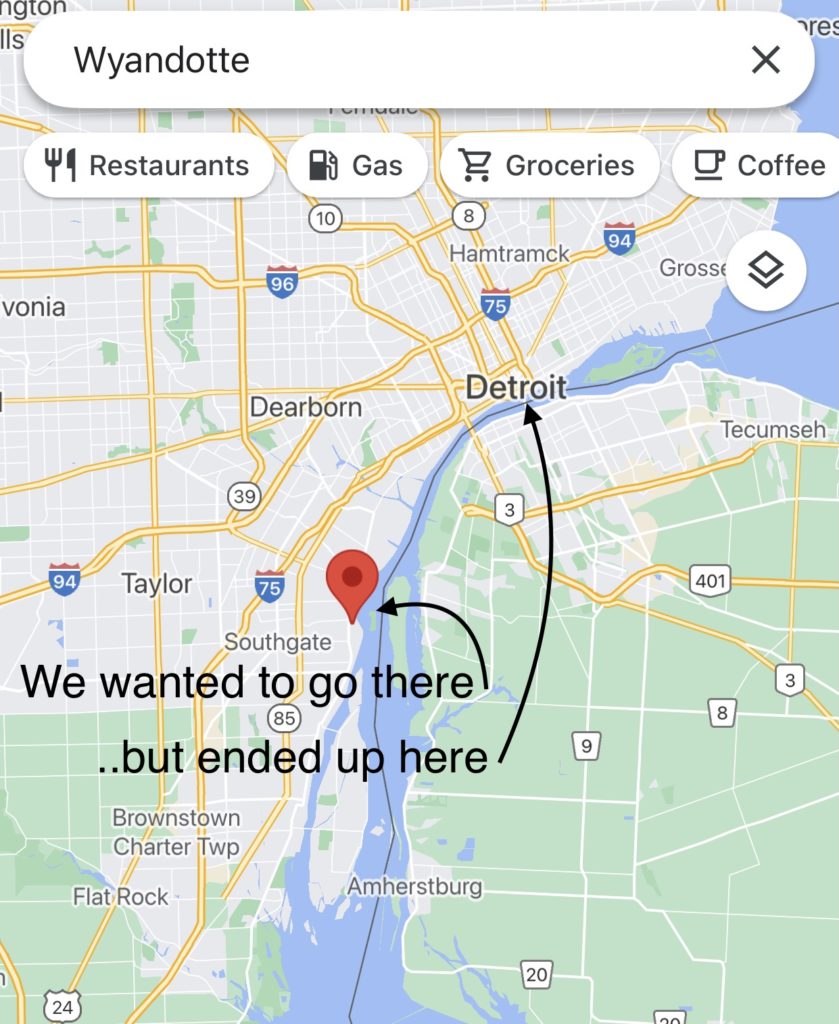
Herein lies the conundrum… boaters should not depend on a specific schedule but do have to plan ahead to secure a marina slip. It is best to consider all factors affecting travel (wind, waves, current, tides, fuel consumption, intermediate safe harbors) and to acquire knowledge of local events that attract boaters (such as festivals, concerts, boat club rendezvous). We were shut out of several marinas as we traveled up the “Michigan Thumb.”
William G. Milliken State Park and Harbor was in the heart of downtown Detroit, just past the new Riverwalk and adjacent to the Aretha Franklin Amphitheatre. The small marina was easy to locate and maneuver. The prominent GM (General Motors) Renaissance Center housed the company’s headquarters, a shopping complex, a post office, a pharmacy, two full service restaurants and a number of cafés. I know this because I walked the half-mile to mail a couple of souvenir gifts home.
Upon returning to our boat I learned two things: (1) expect some noise that evening as there was a concert next door. Sheila E would be performing for the opening of the Jazzy Nights summer concert series. (2) Do not venture out of the marina after dusk. I noticed at least a dozen law enforcement officers in cars, bikes and walking on my short errand but apparently they become scarce after sundown. This night would be an exception with a major concert next door. Still, Detroit holds the record for being the number one crime city in the United States. We turned in early with the famous drummer rattling our windows.
On Thursday, July 8, we crossed Lake St. Clair. We endured several heavy downpours but there was no wind to speak of, and no waves, so we cautiously motored forward even though visibility was at times difficult. We were constantly looking for large freighter ships in the narrow St. Claire River and a place to pull over should it be necessary. We made it to Pine River and the St. Clair Boat Harbor, tired but unscathed.
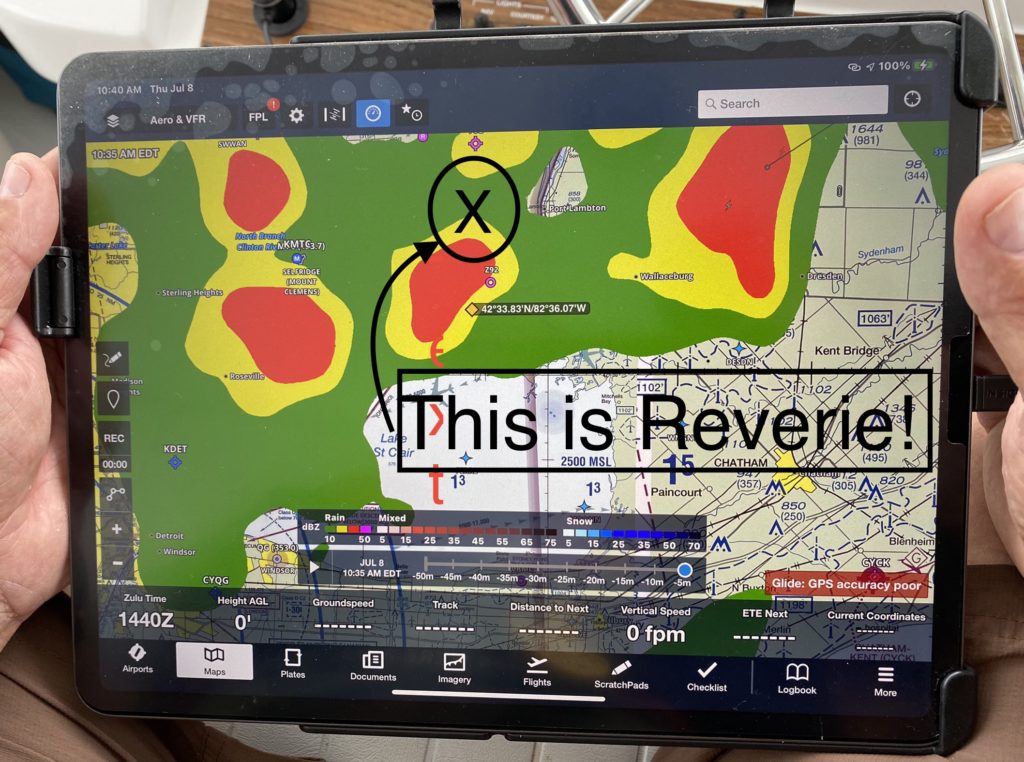
St. Claire is a charming river town. It has an interesting history and a beautifully revived commercial square and river walk. We were treated to a wonderful R&B band and discovered Mannina’s Wine House where we enjoyed hors d’oeuvres and wine flights. To be sure, the boat didn’t really need any more wine, but how could we resist these Bordeaux style dry reds! We made a great connection with the owner/winemaker and promised to send him more business. (The Looper community appreciates recommendations from fellow Loopers!)
Friday was another one of those “sorry, we’re booked” search days. Our original intent was a short run to the Black River near the inlet of the St. Claire River. We wanted to avoid actually entering Lake Huron. After a dozen or so fails, we reviewed the Lake Huron wind and wave reports. With waves at 2-4 feet and wind 10-15, we knew it would be a challenge but Lexington Harbor was a short three hours up the coast. There were no harbors of refuge between us and Lexington. After our experience on the Chesapeake, we knew the boat would do fine. We looked at each other and said, “Let’s just go!”
The St. Clair inlet was pretty choppy but once past that it was not so bad. We motored for the next hour without auto pilot from the upper helm. We rocked and rolled a bit, then after a few five foot waves and hull slams, we moved to the lower helm. Wave intervals were around eight seconds, hitting almost directly on the bow, with a north wind producing 23 mph gusts. Our dinghy was taking a beating so Pete resecurred the straps a few times. We checked each other often with “How are you doing?” “OK, so far.” I think neither of us wanted to say how truly uncomfortable we were but we both knew that the boat could take it and that the marina was just up ahead.
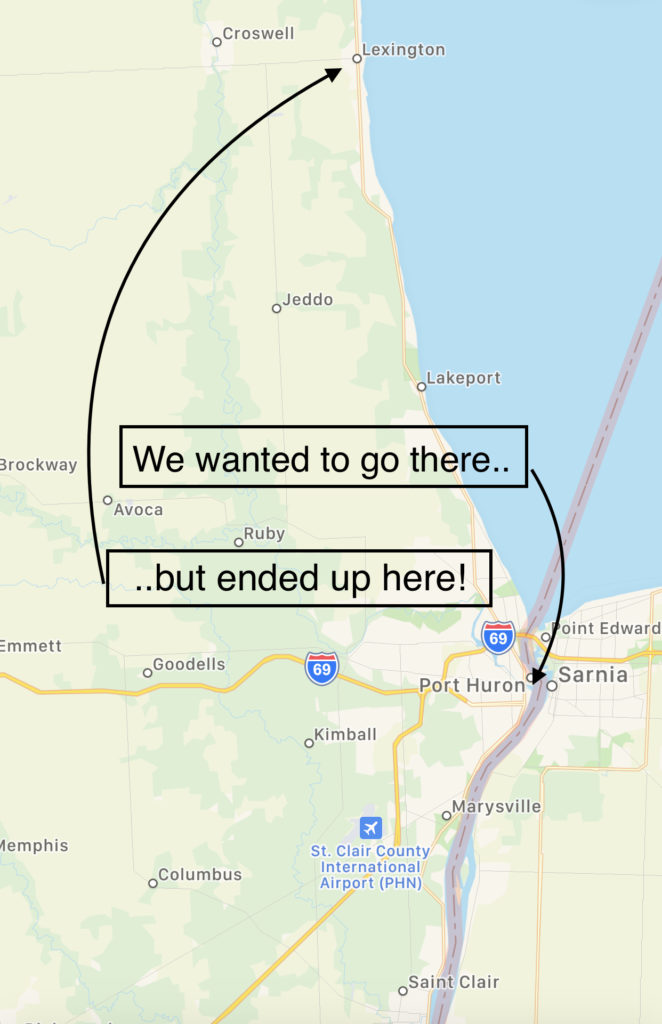
We pulled into Lexington Harbor at 13:45 hours, completely spent. The dock crew had to have read our minds. Three staff were ready for lines on the south side of the fuel dock but the winds never allowed for our safe approach. Captain Pete calmly backed us away and repositioned Reverie for a better approach. We took the north side of the fuel dock using the wind to our advantage. We refueled and took our slip, then breathed a sigh of relief. The “hotwash” was honest and sincere. We each acknowledged how well we did as a team, and that we don’t want to do this again anytime soon!
Lexington to Harbor Beach to Port Austin were delightful days on this Great Lake. Each town offered a glimpse into the life of rural eastern Michiganders.
As a Californian, I was curious about this demonym – the name of a resident of a specific locality. In an unofficial poll, many (58%) felt Michigander rolls off the tongue easier and that Michiganian denotes an air of pomposity unbecoming of a true Michigan dweller.
These townships thrive in the summer months and rely on migrating vacationers offering convenience stores and souvenir shops and expanding tourism hours at various historical sites. In winter, many sites and businesses reduce hours or close completely.
Something else I learned about Michiganders. Without exception, every local described geography by holding out their hand and showing us where something was on “the mitten.”
Port Austin is at the tip of “the thumb” of the state of Michigan. Reverie enjoyed a short travel day and arrived here mid-morning. The crew had a chance to scope the town and provision a few items. As other Loopers arrived, Pete announced that Reverie was organizing “Docktails” at the end of “West Dock” at 7:00 pm for the sunset. For the better part of two hours we enjoyed the company and stories of the five Looper crews who happened to be at this marina. We are fortunate to learn from the veterans and laugh about everybody’s experiences on the more challenging sections of this adventure.
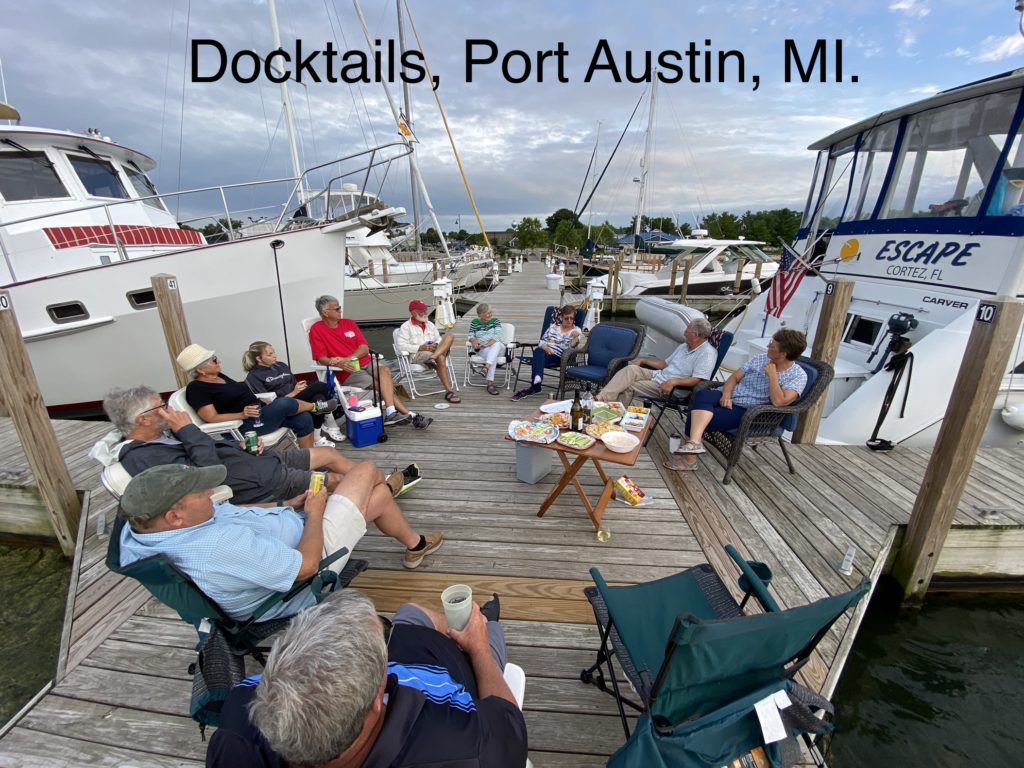
We will leave “the thumb” enriched by the town folks we met, our new Looper friendships and a solid recognition of our own growth as the crew of Reverie.
